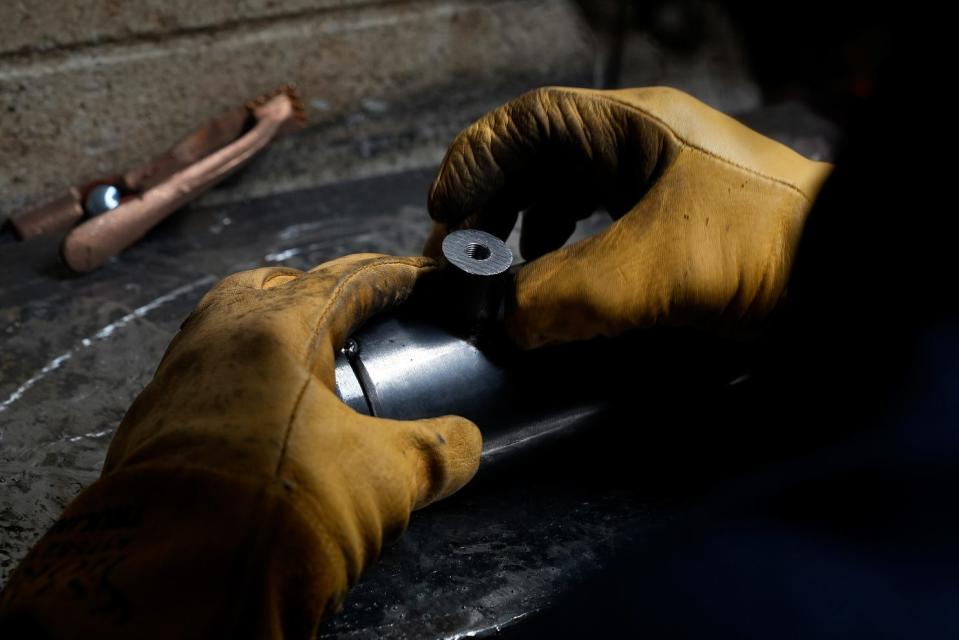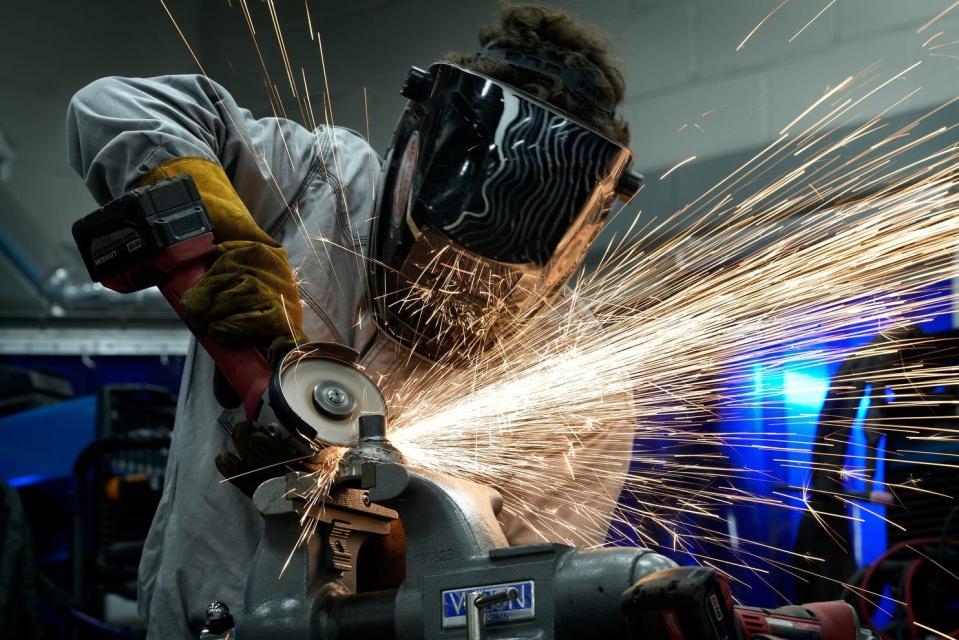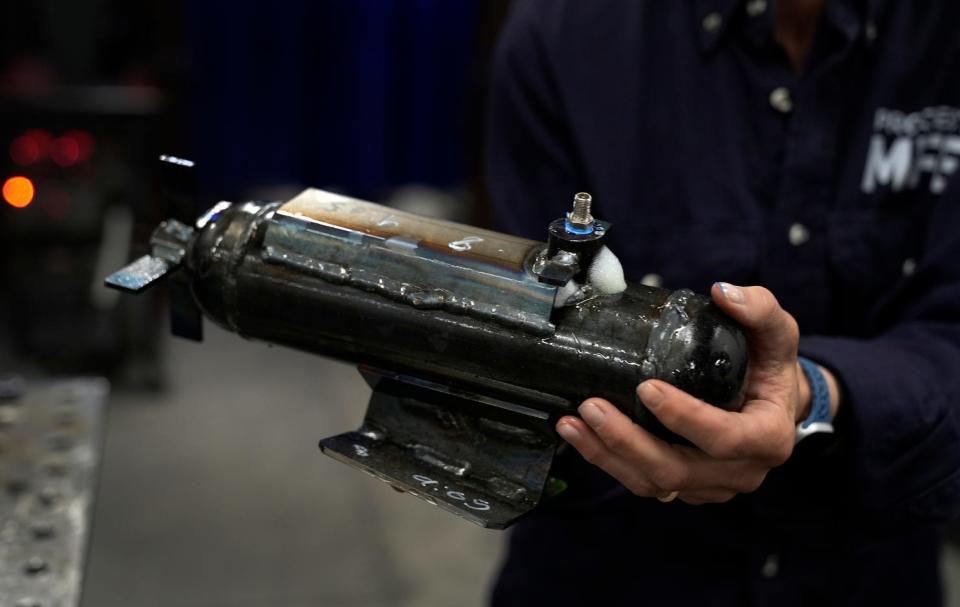RI high school students weld submarines in contest backed by Electric Boat
PROVIDENCE – In a competition sponsored by nuclear submarine builder General Dynamics Electric Boat, high-school welding students raced the clock on Monday to see who could build the best submarine.
Of course, the students weren't making the 11,200-ton, 460-foot Virginia-class fast-attack submarines that Electric Boat builds at Quonset Point, Rhode Island, and Groton, Connecticut.
Although the 16 competitors were assembling decidedly smaller, foot-long subs, their welds had to pass a test as critical in full-sized submarines as in the competition: the finished product had to be airtight when the mini hulls were pressurized.
More: Electric Boat secures $9.5 billion submarine contract with U.S. Navy
The question beneath: Why do we need these ships?
The contest, known as the Project MFG Rhode Island Maritime Welding Competition, was part of a day-long event at Providence Career & Technical Academy, aimed at getting kids excited about careers in shipbuilding trades that, according to one organizer, Tim Fox, offer high-skill, high-tech, high-wage careers.
The event was sponsored jointly by Project MFG, Electric Boat and SENEDIA, an alliance of defense-industry companies in southeastern New England.
In addition to the competition, the event included a career fair with 15 defense contractors. Students had "bingo" that entitled them, if they got stamps from all 15 contractors, to a $25 gift card.
Students began the competition with blueprints and a tray of steel parts: a cylindrical hull, two rounded end caps, a small cylinder to go on top and simulate the "fairwater" that is the highest part of the sub, plus several other parts to make the "planes" – or fins – that make up the control surfaces of the submarine. Other pieces modeled the missile-hatch shroud along the top of the boat and made up a stand to hold the finished project.

The fairwater had to be welded above a small hole in the hull cylinder and had screw threads in it to attach a valve – similar to those on bicycle innertubes – so air could be pumped in for the pressure test.
The finished submarines were submerged in a tank of water, which showed bubbles from any spot where the welds weren't airtight. They were judged on airtightness, quality of the welds and whether the parts were aligned correctly. Additional points were available for finishing before the two-hour time limit and for creativity in how the stands were decorated.
Students from Chariho High School took first and second place, including winner Trey Lavauskas, and a PCTA student took third.


This article originally appeared on The Providence Journal: Electric Boat backed contest teaches students welding for submarine

